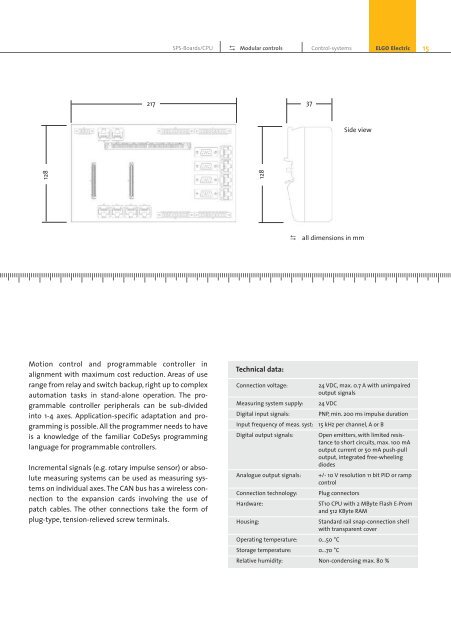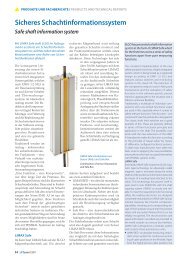C O N T R O L SY ST E M S - ELGO Electric GmbH
C O N T R O L SY ST E M S - ELGO Electric GmbH
C O N T R O L SY ST E M S - ELGO Electric GmbH
- No tags were found...
You also want an ePaper? Increase the reach of your titles
YUMPU automatically turns print PDFs into web optimized ePapers that Google loves.
support the role of CYP3A4 in the oxidation of 4-HPR. However, given that relatively highconcentrations of ketoconazole were used to inhibit 4-oxo-4-HPR formation in HLM both in ourstudy (10 μM) and in the study by Illingworth et al., (100 μM), it is likely that other CYP enzymesin addition to 3A4 contribute to 4-oxo-4-HPR formation in humans.Based on the fact that we observed greater inhibition of 4-oxo-4-HPR formation byketoconazole in MLM versus HLM (96.5% versus 33.7% at 10 μM, see Figures 3A and B), thepresent results suggest that murine experiments may over-estimate the increase in 4-HPRplasma levels to be expected in humans when using concurrent administration of ketoconazoleand 4-HPR if such increases are based solely on the inhibition of metabolism of 4-HPR to 4-oxo-4-HPR. Further, we recognize that ketoconazole may inhibit other CYP enzyme isoforms inaddition to 3A4 at concentrations above 1 μM (Jia and Liu, 2007). Thus ketoconazole cotreatmenthas the potential to decrease the conversion of 4-HPR to metabolites other than 4-oxo-4-HPR and could result in higher 4-HPR plasma levels in patients than would be suggestedby analysis of 4-oxo-4-HPR formation alone in HLM. Also, importantly, although 4-oxo-4-HPRmay obtain lower steady-state plasma levels than other 4-HPR metabolites in humans, thespecific mass per time (flux) of 4-HPR through 4-oxo-4-HPR metabolism in humans is notknown and, if great enough, could represent a useful target for pharmacologic intervention byketoconazole or other agents on this basis.Based on microsomal results, in addition to increasing 4-HPR plasma levels weexpected that co-administration of ketoconazole to mice would also result in a concomitant risein 4-MPR plasma levels (as oxidation of 4-HPR was inhibited, more 4-HPR was available to theother metabolic pathways). However, in addition to a slight increase in 4-MPR levels,surprisingly, ketoconazole increased 4-oxo-4-HPR plasma levels in mice (Figure 4C), perhaps acounterintuitive result. Considering that CYP3A4 may also mediate the formation ofdehydrogenated 4-HPR and hydroxy-4-oxo-4-HPR, and that the metabolism of both ATRA and17

















